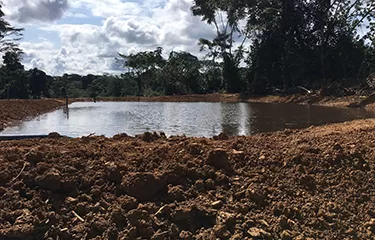Cameroon, a net frozen fish importer, appears determined to woo more investments in its fish farming so as to reduce the country’s surging seafood imports.
The central African country, with a fisheries sector that accounts for up to 1.8 percent of the country’s estimated USD 35 billion (EUR 29.6 billion) economy, is leveraging on the prevailing political goodwill and conducive investment climate to expand its aquaculture sector – currently estimated to produce just 10,000 metric tons (MT).
Cameroon’s estimates its current fish production at slightly more than 230,000 MT compared to the annual demand of 450,000 MT. Moreover, with the intention of taking advantage of the government’s recent measure to knock out all customs duties on imports of aquaculture equipment since early 2021, some private entities are betting on government goodwill to entrench themselves in Cameroon’s seafood production and supply business.
For example, Czech Republic’s NIREX Investment’s subsidiary, NIREX Cameroon Farms, has since 2017 invested in seafood production in support of Cameroon’s effort to wean itself from reliance on imported frozen seafood to meet the domestic market requirements.
NIREX, which focuses on the production of high-quality fingerlings, said it has invested in one of the biggest catfish hatcheries in Cameroon, with annual capacity of more than 200,000 fingerlings, after realizing the country’s biggest hurdles to achieving self-sufficiency in seafood production was “lack of access to quality parent catfish and tilapia, non-availability of quality larvae, fry, fingerlings, parent feed and poor knowledge of mono sex male tilapia production technology as well as access to training facilities.”
Currently NIREX produces more than 230,000 mono-sex male tilapia annually from its modified farm infrastructure.
NIREX’s farm supplies fingerlings to other fish farmers through existing farmer cooperative societies, especially in the central region of the country, with more than 70 aquaculture practitioners getting training on the adoption of mono sex male tilapia.
Investments in Cameroon’s aquaculture market are significant in the country’s seafood industry, partly because the country is facing a severe challenge in its fight against Illegal, unreported and unregulated (IUU) fishing that has continued to diminish its capacity to meet the national seafood demand from capture fisheries alone. That struggle saw the European Commission (EC) issue a yellow card to the country to improve its strategies in the fight against IUU fishing in February 2021.

